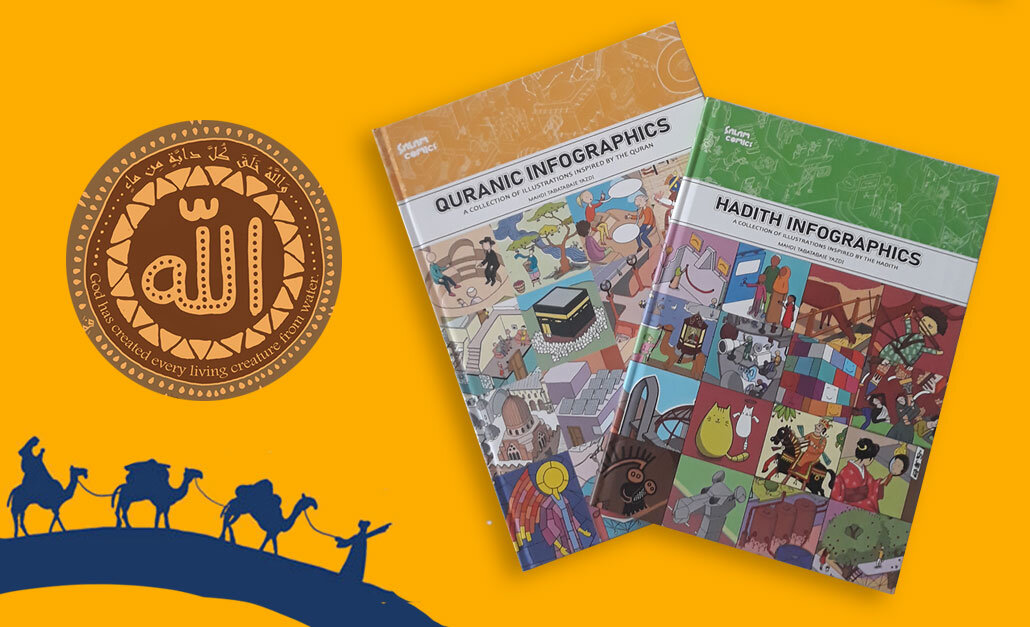By Ali Hamedin

TEHRAN- The combination of word balloons and illustrations depicting various landscapes and characters has created a type of entertaining book known as comic books. While many associate comic books with superheroes, these captivating narratives have held a cherished place in children's libraries for generations. It's not just children who are captivated by the allure of comic books; teenagers and adults alike find solace and enjoyment in these graphic tales. With their vast appeal across age groups, comic books have emerged as invaluable tools for conveying religious themes and concepts, resonating with a broad readership.
Mahdi Tabatabai Yazdi is an Iranian comic artist who has created comics based on the stories of the Quran. As a Muslim artist, Tabatabai has always been interested in creating art works with religious themes. From a young age, he channeled his creative energies into crafting illustrations with rich narratives and profound messages.
As his exposure to the wider world of art increased, he was faced with the reality that even in his religious society, art represented many aspects of human life – except religion. Therefore, as an artist inspired by Islam, Tabatabai chose to communicate his faith through his artwork.
In an interview with Tehran Times, Tabatabai, the founder of SalamComics, expressed that he does not believe in "art for art's sake" and believes that religion should always be present in art as one of the aspects of human life.
“All human aspects such as love and sometimes sexual issues are mentioned in the art works, but there is no trace of religion.”
he explained that before he followed this style of comics and infographics, he first published a collection of short stories in English on social media.
“Through these stories, I received a series of illustration work orders as a freelancer, and while completing them, I decided to create a collection for myself because I was interested in illustrating my own ideas. The quickest method was to produce a series of one-page posters, and this marked the beginning of these infographic books. Each poster contained a topic from the Quran that I illustrated and shared on social media," he added.
"After some time, in 2019, I went to the Comic-Con exhibition in Dubai, and it was there that I decided for the first time to make these Quran-oriented posters into a book," he explained.
"Quranic Infographics: A Collection of Illustrations Inspired by the Quran" and "Hadith Infographics: A Collection of Illustrations Inspired by the Hadith" are Tabatabai’s two published books. The first book is a collection of illustrations inspired from the verses of the Holy Quran and the second book contains thought provoking illustrations with authentic narrations of Prophet Muhammed (PBUH).
"The primary audience for these comics and infographic books is teenagers. We sent approximately eight to nine thousand copies of the two books to over 25 countries worldwide. Some countries showed a greater reception, including East Asian countries, England, the United States, and Canada. Our audience ranged from six to 40 years old," he noted.
Tabatabai pointed out that he received overwhelmingly positive feedback about his works. “One of our readers was a seven-year-old child in India who carried the book with him and explained it to his friends. A reader from America mentioned that upon receiving the book in the mail, their child remained in the parking lot. The child read the entire book before returning to the house.”
He highlighted that some religious schools, both Shia and Sunni, incorporated these books into their curriculum. “80 percent of our audience consisted of Sunnis.”
Tabatabai stated that his main audience was Muslims living in other countries, but he wrote the books from the beginning in such a way that non-Muslims could also use them.
To express religious concepts in his book, Tabatabai has used the illustrations in different art styles from around the world – Japanese, Chinese, Indian, Persian and from various historic eras-prehistoric and medieval.
“On one page of the book, I had designed the verses of the Quran about Maryam (AS) in the style of Gothic architecture found in church windows. A new Muslim purchased the poster of that page and displayed it to his non-Muslim parents,” he explained.
The founder of SalamComics mentioned that his two books have been translated into Spanish, Danish and Italian. A Malay translation has also been done but has not yet been published. Tabatabai also said that these two books will soon be translated into Persian by an Iranian publication.
He expressed that they are still working on expanding the sales of these books and making new volumes. “’Names of Allah Infographics’ is also the third book which is our next project,” he concluded.
TAGS

No comments:
Post a Comment